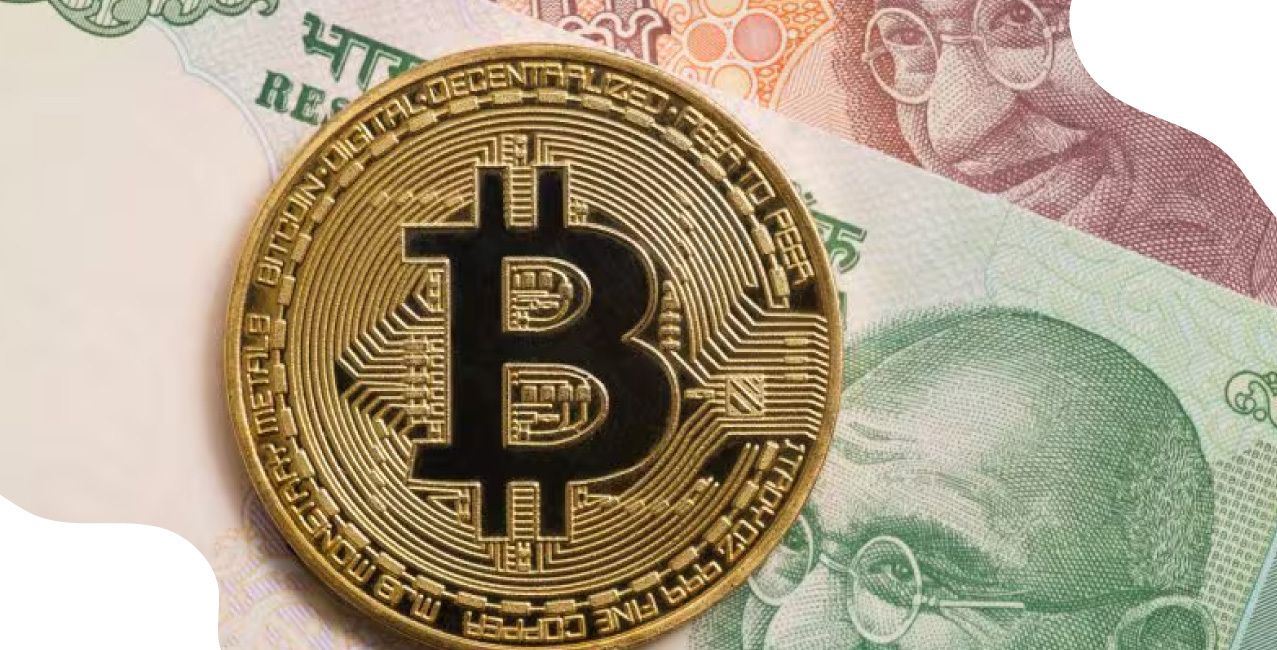
Author
LoansJagat Team
Read Time
4 Min
08 Oct 2025
India’s Own Cryptocurrency? When Will The RBI Launch This Digital Currency?
The government plans a larger rollout of the e-rupee after pilot results show promise and challenges in equal measure.
Just a few years ago, many shopkeepers refused digital payments, preferring coins and small notes. Today, the same vendors accept QR payments without hesitation. Now, a new shift is coming,
India is preparing for an RBI backed digital currency India, also known as the digital rupee. The plan marks a fresh phase in India’s financial journey, one led by the Reserve Bank of India (RBI) and supported by the government.
In October 2025, Commerce and Industry Minister Piyush Goyal on digital currency said the government would soon move towards an India official digital currency announcement, confirming the RBI’s readiness to expand the pilot of the e-rupee. The move aims to simplify transactions, curb cash dependency, and strengthen India’s monetary system.
India’s Latest Step In The Digital Currency Drive
According to the RBI’s Annual Report 2024–25, the circulation of the e-rupee stood at ₹1,016 crore by March 2025, compared to ₹234 crore in March 2024. The growth shows steady progress since the pilot began in December 2022.
The same report noted that daily transactions once touched one million, but later stabilised at around 100,000 when incentives for users and merchants were withdrawn. While this fluctuation raised questions, it also gave the RBI valuable insights into usage trends and operational gaps.
This latest development positions India among global economies experimenting with central bank digital currencies (CBDCs), including China, Sweden, and Singapore.
Why Does India Need The Digital Rupee?
In its Concept Note on Central Bank Digital Currency (2024), the RBI explained that printing and distributing physical currency cost the government ₹4,984.80 crore in FY 2021–22, up from ₹4,012.10 crore in FY 2020–21. Reducing this recurring expense is one of the primary motivations behind digital currency adoption.
The e-rupee’s introduction is also meant to enhance payment efficiency and lower transaction costs. It is part of a broader Reserve Bank of India cryptocurrency plan, which focuses on creating a sovereign, risk-free digital payment system that mirrors cash in value and usability.
The growing cost of cash handling reflects why the RBI wants a secure digital option. Digital money can save logistics costs and improve transaction tracking, especially in rural and semi-urban markets.
RBI’s Blueprint For India Central Bank Digital Rupee Launch
The RBI has created two main formats for the digital rupee: Retail CBDC (e₹-R) and Wholesale CBDC (e₹-W). The retail version targets consumers and merchants, while the wholesale version is designed for banks and financial institutions for inter-bank settlements.
By expanding e-rupee access to non-bank payment apps like Google Pay and PhonePe, the central bank hopes to reach a larger audience. As of 2024, over 4.6 million users and 400,000 merchants had already joined the retail pilot.
These figures suggest a steady base of adoption, though scaling beyond metro cities will require stronger digital infrastructure and public awareness campaigns.
The Technical Side Of The Reserve Bank Of India Cryptocurrency Plan
The Reserve Bank of India cryptocurrency plan differs from unregulated crypto assets. It uses blockchain technology but keeps full control under the RBI. The system records each transaction securely without compromising monetary stability.
In October 2025, Reuters reported that the RBI plans to test deposit tokenisation, which allows banks to convert traditional deposits into digital tokens for faster settlement. This trial is part of the next phase in the e-rupee roadmap.
These initiatives show how the e-rupee is not just about payment convenience but also about modernising the entire banking structure. The RBI’s future plans include offline payment features to help users in areas with poor internet access.
Piyush Goyal On Digital Currency: A Political And Economic Signal
Minister Piyush Goyal said that India would discourage cryptocurrencies not backed by real assets. This remark highlights the government’s intention to support the RBI-backed digital currency as the only lawful and secure digital tender.
Earlier coverage like “Is Crypto Legal in India? 2025 Update” on LoansJagat explains how India views cryptocurrencies with caution and supports a regulated digital rupee.
The proposed e-rupee aligns with that policy direction. It aims to bridge innovation and compliance, bringing digital currency under the government’s regulated framework.
By maintaining a fixed value and full regulatory control, the digital rupee aims to eliminate the volatility seen in crypto assets and restore public trust in digital money.
Conclusion
The India central bank digital rupee launch will move into its next phase after the RBI completes the deposit tokenisation pilot. The 2025–26 roadmap aims to strengthen interoperability between e-rupee wallets and existing payment systems like UPI.
RBI officials are also studying models for cross-border CBDC collaboration, which could simplify remittances and foreign trade settlements. The focus now is on stability, security, and seamless use across economic sectors.
The government’s stand is clear: digital money must retain the same trust as physical currency. While the path ahead involves technical and behavioural challenges, India’s ambition to lead in sovereign digital payments remains firm.
The shift from paper to programmable money is no longer a distant idea, it is a policy in motion, backed by data, technology, and a cautious central bank.
About the Author

LoansJagat Team
‘Simplify Finance for Everyone.’ This is the common goal of our team, as we try to explain any topic with relatable examples. From personal to business finance, managing EMIs to becoming debt-free, we do extensive research on each and every parameter, so you don’t have to. Scroll up and have a look at what 15+ years of experience in the BFSI sector looks like.

Quick Apply Loan
Subscribe Now
Related Blog Post

LoansJagat Team • 10 Jun 2025

LoansJagat Team • 06 Jun 2025

LoansJagat Team • 22 Sep 2025